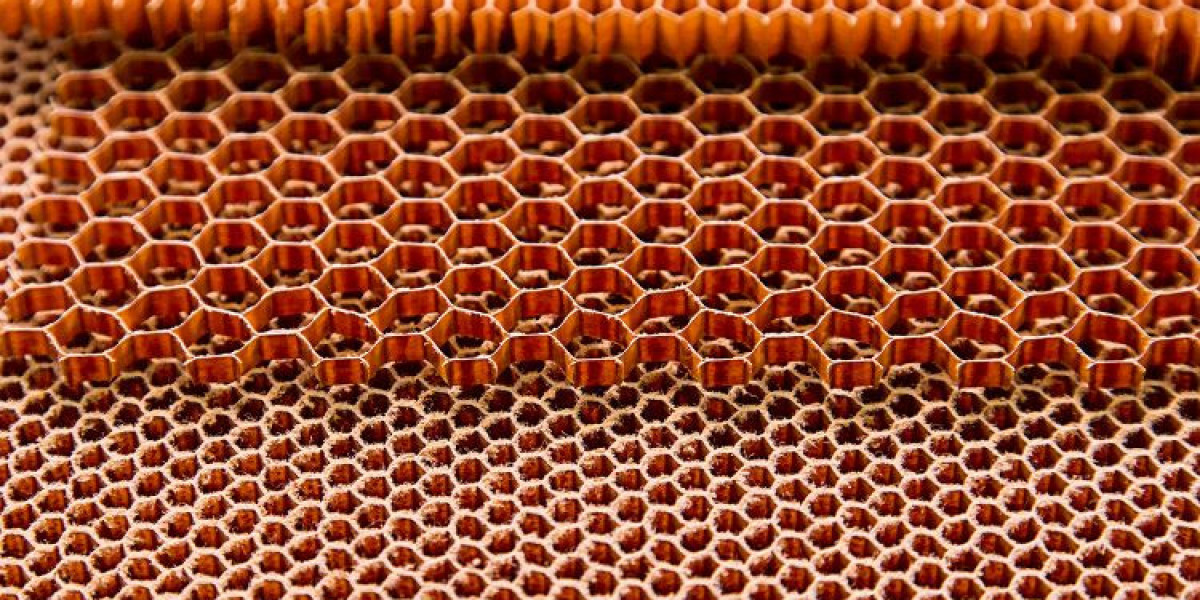Honeycomb core materials are a type of composite materials that consist of a cellular structure with hexagonal or other polygonal cells. These materials have been widely used in various engineering applications, such as aerospace, automotive, construction, and marine industries, due to their superior properties and performance. According to a recent report, the global honeycomb core materials market size attained a value of about USD 3.70 billion in 2023. The market is further expected to grow in the forecast period of 2024-2032 at a CAGR of 11.22% to reach nearly USD 9.56 billion by 2032. In this blog post, we will explore the advantages of honeycomb core materials in modern engineering and discuss some of the challenges and future outlooks of this emerging technology.
Lightweight and High-Strength Properties
One of the main advantages of honeycomb core materials is their lightweight and high-strength properties. The honeycomb structure provides a high strength-to-weight ratio, which means that it can withstand high loads while being relatively light. This is because the honeycomb cells act as a network of beams that distribute the stress evenly throughout the structure. Honeycomb core materials can achieve the same or higher strength with much less weight than traditional materials, such as solid metals or wood. This reduces the material consumption and transportation costs, as well as the environmental impact of the engineering products.
Structural Integrity and Rigidity
Another advantage of honeycomb core materials is their structural integrity and rigidity. The honeycomb structure provides enhanced rigidity, which means that it can resist deformation and buckling under compression or bending. This is because the honeycomb cells form a rigid frame that supports the face sheets of the composite material. The rigidity of the honeycomb core materials can be adjusted by varying the cell size, shape, and thickness, as well as the material type and density. Honeycomb core materials are ideal for applications that require load-bearing structures and panels, such as aircraft wings, floors, and fuselages, as well as building walls and roofs.
Thermal and Acoustic Insulation Properties
A third advantage of honeycomb core materials is their thermal and acoustic insulation properties. The honeycomb structure provides thermal insulation capabilities, which means that it can reduce the heat transfer between the face sheets and the environment. This is because the honeycomb cells create air pockets that act as a barrier to the heat flow. The thermal insulation properties of the honeycomb core materials can be enhanced by using low-conductivity materials, such as polymers or ceramics, or by filling the cells with insulating materials, such as foams or fibers. Honeycomb core materials are useful for applications that require thermal protection and energy efficiency, such as spacecraft, satellites, and refrigerators.
The honeycomb structure also provides acoustic dampening properties, which means that it can reduce the noise transmission between the face sheets and the environment. This is because the honeycomb cells absorb face sheets and the sound waves that impinge on the structure. The acoustic dampening properties of the honeycomb core materials can be improved by using porous materials, such as metals or wood, or by adding perforations or holes to the factsheets or the cells. Honeycomb core materials are beneficial for applications that require noise reduction and sound quality, such as automobiles, trains, and concert halls.
Customization and Design Flexibility
A fourth advantage of honeycomb core materials is their customization and design flexibility. The honeycomb structure provides flexibility in shape, size, and material selection, which means that it can be tailored to fit the specific requirements and specifications of the engineering products. The honeycomb core materials can be fabricated into various geometries, such as flat, curved, or cylindrical, by using different molding or cutting techniques. The honeycomb core materials can also be made from various materials, such as metals, polymers, ceramics, or natural fibers, by using different bonding or coating methods. The honeycomb core materials can be combined with other materials, such as skins, adhesives, or reinforcements, to form sandwich or hybrid composites that have enhanced properties and performance. Honeycomb core materials are suitable for applications that require customization and design flexibility, such as furniture, art, and architecture.
Environmental Sustainability
A fifth advantage of honeycomb core materials is their environmental sustainability. The honeycomb structure provides eco-friendly aspects, which means that it can reduce the environmental impact of the engineering products. The honeycomb core materials can reduce the material consumption and the waste generation, as they use less material to achieve the same or high strength and rigidity. The honeycomb core materials can also reduce energy consumption and greenhouse gas emissions, as they reduce the weight and the fuel consumption of the engineering products. The honeycomb core materials can be made from renewable or recycled materials, such as natural fibers or metals, which reduce the dependence on non-renewable resources. The honeycomb core materials can also be recycled or reused, as they can be separated or reprocessed into new products. Honeycomb core materials are compatible with applications that require environmental sustainability, such as green buildings, electric vehicles, and wind turbines.
Cost-effectiveness and Return on Investment (ROI)
A sixth advantage of honeycomb core materials is their cost-effectiveness and return on investment (ROI). The honeycomb structure provides cost-saving potential, which means that it can reduce the initial and operational costs of the engineering products. The honeycomb core materials can reduce the initial costs, as they use less material and labor to manufacture and assemble the products. The honeycomb core materials can also reduce the operational costs, as they reduce the maintenance and repair costs, as well as the fuel and transportation costs, of the products. The honeycomb core materials can provide long-term benefits, as they increase the durability and reliability, as well as the performance and functionality, of the products. The honeycomb core materials can generate a high ROI, as they provide a competitive advantage and a value-added proposition for engineering products. Honeycomb core materials are attractive for applications that require cost-effectiveness and ROI, such as aerospace, automotive, and construction industries.
Challenges and Future Outlook
Despite the many advantages of honeycomb core materials, there are also some challenges and limitations that need to be addressed and overcome. Some of the current challenges in the adoption of honeycomb core materials include the high initial investment and the complex manufacturing processes, the difficulty in testing and quality control, the lack of standardization and regulation, the limited availability and accessibility of materials and technologies, and the potential environmental and health risks of some materials and processes. However, these challenges can be overcome by developing and implementing new and innovative technologies and solutions, such as advanced manufacturing techniques (e.g., CNC machining, additive manufacturing), smart and multifunctional materials (e.g., self-healing, self-sensing, self-adapting), digital and automated systems (e.g., simulation, modeling, optimization, monitoring), and sustainable and circular practices (e.g., life cycle assessment, eco-design, waste management). The future outlook of honeycomb core materials is promising and optimistic, as they offer great potential and opportunity for enhancing the performance and efficiency, as well as the sustainability and profitability, of modern engineering products and applications.








